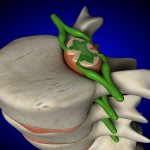Although outdoor pollution has been reduced around the painting by 88 and 94 per cent, indoor pollution is still a major threat to Da Vinci’s “˜Last Supper’.
Leonardo Da Vinci’s famous painting has survived absolutely everything — including World War II and a 20-year restoration project that begun in 1978 and that was deemed as “the most important restoration of the century”. The staff at Santa Maria delle Grazie church in Milan has managed to control the hordes of tourists that every year pay homage to the much commented protagonist of Dan Brown’s The Da Vince Code; and despite their best efforts, the Last Supper is soiling.
Although a sophisticated heating, ventilation and air conditioning system was installed in 2009 to protect the painting from the polluted air of Milan, Europe’s most polluted city, this hasn’t been enough: visitors remain a potential risk.
The pollutants come from the fatty lipids in the skin of visitors to the refractory of the Domenican convent. Nancy Daher, a University of Southern California (USC) graduate student, said on the university’s website that “fatty lipids from the skin of visitors to the church still appeared in significant quantities around the artwork — even when visitors access to the painting is strictly regulated… Airborne lipids from visitor’s skin can combine with dust in the air and, if they come in contact with the painting, soil it.”
Painted between 1494 and 1498, the Last Supper is visited every 15 minutes by groups of up to 25 people. In addition, tiny particles of wax used in restoration processes also get into the air, soiling the painting in the same manner. The researchers will present their results in December in Milan. These will aid in the conservation of the Last Supper and could be used to protect other indoor artworks.
Source: USC







